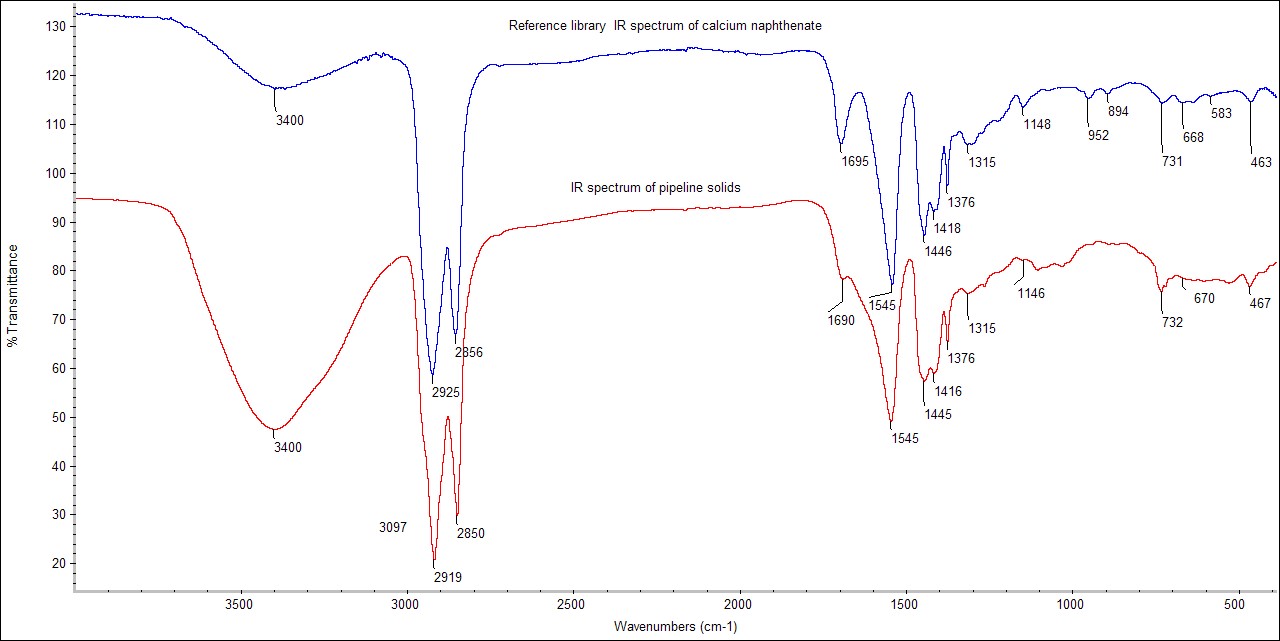Oil & Gas 1
The Case
James Hutton Limited was approached by an oil company client with a request to provide an appropriate analytical technique capable of detecting napthenates in oil pipe deposits. Calcium napthenate deposits can cause separator fouling and flow assurance problems which can shut down oil production hence early identification of napthenates is essential to allow appropriate remedial treatment to commence.
Where does calcium napthenate come from?
- Under certain conditions, the napthenic acids present in acidic crude oil will precipitate with Ca2-ions that are present in produced water and to a lesser extent, other metal napthenates
- This precipitation accumulates predominantly in oil/water separators and de-salters, but napthenates can also deposit in pipelines
- When the crude oil is being processed offshore, the pressure decreases which leads to a degassing of carbon dioxide from the formation water and hence an increase in pH
- When the pH of the water increases, the concentration of dissociated acid also increases which favours the formation of calcium napthenate
The Approach
To solve this problem, James Hutton Limited, has developed a relatively rapid analytical procedure using FTIR to identify napthenic acid salts. Since the sludge-like deposits are invariably mixtures of solids and hydrocarbons, organic solvent extraction is required to remove the hydrocarbons and concentrate any napthenic acid salts.
Infrared spectra of the solids are then recorded using a Fourier Transform Infrared (FTIR) spectrometer fitted with a diamond accentuated total reflectance (DATR) accessory which involves minimal sample handling and requires only milligram quantities of samples.
The IR spectrum represents a qualitative chemical fingerprint of the solids which can be interpreted by means of functional group analysis and use of search software to compare the spectrum of the unknown sample with a library of in-house reference IR spectra.

Comparison of IR spectrum of pipeline solids and reference library IR spectrum of calcium naphthenate.
The Cost-Saving Outcome
The results of the FTIR analysis of the pipeline solids clearly show that calcium napthenate-type material is the dominant component present in the solids which allows the client to initiate an appropriate chemical treatment to prevent the formation of napthenate salts and reduce costly shut down time.
Most other methods for the detection of napthenates involve a mixed organic solvent extraction procedure which is likely to be less specific than the FTIR method.
As well as the detection of naphthenates, FTIR analysis can also be applied to the characterisation/identification of a range of oil industry problems relating to scale inhibitors, corrosion inhibitors, drilling muds, hydrogen sulphide scavengers, emulsifiers and more.

